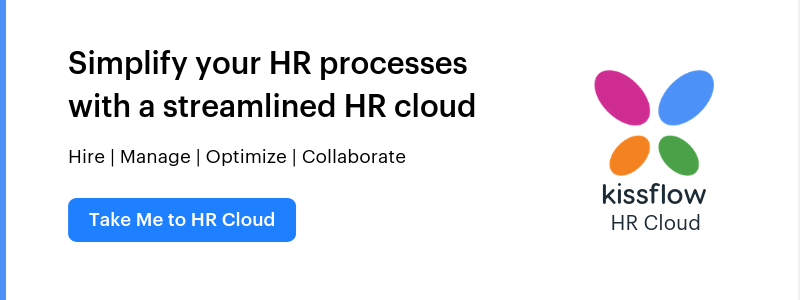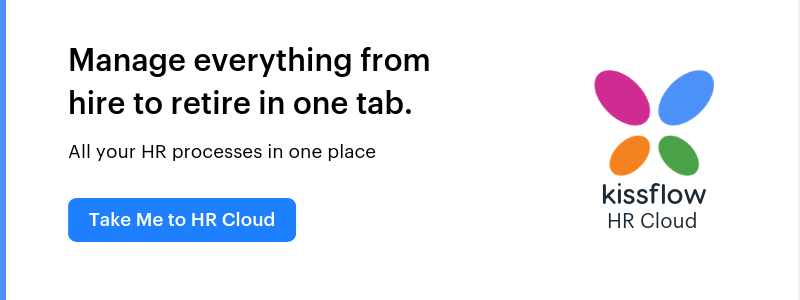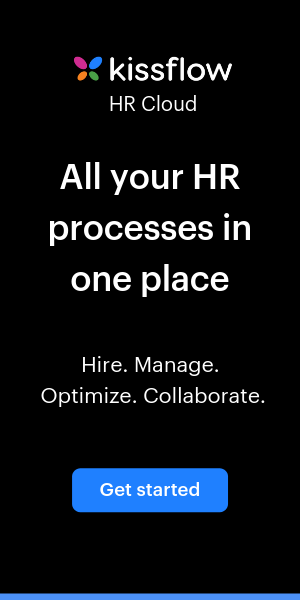The majority of organizations, whether small start-up companies or well-established multinationals, recognize the importance of the Human Resources (HR) function in their business and the value it adds. Increasingly, however, there has become a need to realize resource savings across the function and replace time-consuming and laborious manual HR processes with streamlined, automated ones.
What is human resource management?
The term Human Resource Management (HRM) is a process that essentially covers the fundamental procedures, tasks, activities, and policies in an organization that relates to its key resource–its employees. The scope of the HR department in a business is extensive and includes functions like recruiting, employee benefits, training, and workplace culture.
In today’s modern workplaces, merely carrying out tasks relating to the people in your business, such as administering salaries and conducting interviews, is not enough. It’s crucial that the work done in the HR team is fully integrated into the business and actively contributes towards helping it achieve its strategic goals. It’s in this way that HRM has moved away from just being a task or process-oriented function to one of strategic importance.
9 important Human Resource Management functions
Human Resource Management process has many faces. Let’s take a closer look at some of the critical areas that the HR team of a business is responsible for.
1. Recruitment automation
This function covers the range of activities from a manager identifying a potential vacancy in their team to a formal offer of employment being made to the successful candidate. Human Resources will usually support the line manager to scope out the job description, including duties, salary, etc., and then advertise the vacancy per the recruitment strategy. This may involve direct advertising online or in other media outlets, or working with a recruitment or headhunting agency.
Generally, HR and the line manager work together to shortlist candidates against the job specification and then carry out interviews before making an offer of employment.
2. Onboarding
Once a candidate has been made an offer, a number of processes need to be carried out by the HR function. First, a contract of employment and other offer documents are generated and sent to the new employee. Next, the HR team works in conjunction with the new employee’s line manager to arrange their induction and training programme, as well as setting up essential things such as IT access, security passes, desk space, etc.
3. Talent management
It’s important for Human Resources to look to the future of the organization, as well as focus on the present. The HR team works with the senior leadership team to identify plans, opportunities, and challenges that may affect the business. HR then draws up an effective talent management strategy to ensure that the people aspect of the company can meet these future changes.
4. Compensation and benefits
This is one of the functions of HRM which is probably the most transactional. It includes administering and running payroll, calculating and paying bonuses and administering the benefits schemes which the company offers, such as private medical insurance and pensions. Some of these tasks involve detailed and ongoing liaison with third-party partners. There is certainly a strategic element to this area too, as the compensation and benefits strategy should be linked to the type and goals of the wider business.
For example, a focus on increasing sales may be better achieved by offering commission-based bonuses to sales staff.
5. Regulatory compliance
The HR function is responsible for supporting employees and line managers to adhere to the employment laws and regulations that are in force in the country and field of operation. Such laws could relate to employee relations (such as disciplinary and grievance), health and safety, payment of income tax, etc. Keeping up to date with changes to regulations in all of these areas is a key challenge for HR teams.
6. Performance management
Driving exceptional performance among employees is usually a key objective for the HR function and managing the performance management process of an organization is a time consuming and busy area. It involves creating simple yet effective performance management templates and scoring systems, working with managers to track performance levels across their teams and implementing initiatives to improve poor performance and drive good performance across the business.
7. Learning & development (L&D)
The L&D function of a business is sometimes separated from the main HR function, particularly in larger organizations, but is often integrated with the wider HR team. Its work includes sourcing or designing training courses to meet learning needs, organizing coaching and mentoring programs and other initiatives to improve job performance and corporate behaviours across employees and teams.
8. Engagement and retention
Smart businesses recognize the importance of happy and motivated employees and a low staff turnover rate in driving organizational success. The HR function is responsible for gaging employee morale through staff surveys and focus groups and then, in partnership with management, designing strategies to improve employee engagement and retention. Conducting thorough exit interviews and acting on the results is also an important part of this process.
9. Succession planning
An important part of Human Resource Management is identifying the key and crucial roles that will be critical to business success in the future and then working out which employees could be best suited to such positions in the future, supporting them to gain the skills which they will need to be successful.
Automation changes the face of Human Resource Management
From the summary above, it’s clear to see how broad the range of activities that fall under the umbrella of HRM is. A skilled and effective HR team can add enormous value to an organization but they are all too often caught up carrying out manual tasks on paper or simple spreadsheets, meaning their time and talent is wasted where it could be used more effectively for the good of the business.
By using HR software that adds automation to some of the key HR processes, businesses can improve the consistency and accuracy of the data which they work with, leading to fewer errors and less time spent on labor-intensive processes. This can free up the time of the HR team, allowing them to focus on more value-adding activities. HR software often also has a range of reporting tools built into it, so companies can easily obtain and analyze valuable data relating to areas such as absence, performance, turnover, etc.
Human Resource Management Software (HRMS) your team will love
There are a number of providers of HRMS on the market, each offering a mixture of both generic and specific features and functionalities. Before investing, you should take time to review and trial different types of software to ensure the one you choose suits the needs of your business.
Here is a summary of some of the most popular on the market:
1. BambooHR
This is a trusted software solution for smaller businesses, as it offers an off-the-shelf format that has built-in, simple to use functionality to implement it with minimum work and therefore allows companies to get started using it quickly. One of its more popular features is the ability to track employee time and attendance straightforwardly and accurately, allowing for greater accuracy and less line manager time spent manually working out overtime and leave payments.
2. Kissflow HR Cloud
Kissflow HR Cloud includes a complete set of tightly integrated workforce management solutions, robust HR analytics and reports with a next-generation core HR solution. The workforce acquisition module helps businesses find, attract, engage, hire, and onboard the best possible talent using a unified applicant tracking system.
The performance management module lets businesses align individual employees and teams with corporate goals and strategies efficiently. It standardizes the employee appraisal process while giving organizations the flexibility to tailor it to their unique needs. Leave management offers a comprehensive set of features to manage employee time-off.
The attendance and time tracking module integrates heavily with payroll processing offering tools to manage workforce scheduling, timesheet management, and more. Finally, the employee offboarding module makes employee offboarding painless and positive for everyone involved. Best of all, you are always in control. You can make changes to tailor the modules to fit your unique policies.
3. Workable
This software offers more specialized functionality based on the recruitment process of a business. It’s a great choice to support the HR team by building the careers pages of their website to attract candidates, tracking job vacancies and applications and then scheduling and evaluating interviews to find the right people for live jobs. As tasks relating to recruitment administration can be very time-consuming for most organizations, Workable offers a useful automated solution.
4. Zoho People
Zoho operates a number of different types of business applications and this particular app features a full range of HR functionalities such as performance management, time and attendance and compensation, and benefits administration. One of the main advantages of this software is the fact that you can easily integrate it to the other business apps provided by Zoho, to create a customized and smooth-running suite of functionalities across the whole business.
5. Peakon
Peakon is less of a general HR software solution and instead focuses primarily on the measurement, analysis, and improvement of employee engagement in an organization. It has a continuous approach to employee feedback, allowing managers to have regular access to their team’s engagement and performance statistics, as well as mechanisms for benchmarking and analyzing the data. The overriding goal of Peakon is to improve the employee engagement of a business, to reduce turnover and make gains in productivity.
Conclusion
Due to the volume and variety of work which makes up the HR function of a business, it’s no surprise that more and more organizations are turning to HR software to improve the speed, accuracy, and quality of data and HR processes. With SaaS opening up the market for most businesses, affording an HRMS has never been simple, and choosing the right software has never been more critical.
So, it is essential to pick an HR management software that is simple, intuitive, compliant, unified, integrated, and flexible. Kissflow HR Cloud is built to tackle these challenges and let you manage HR activities in an ever-evolving workplace. Best of all, our application works and looks like your favorite e-commerce site.
With a minimal amount of training, every type of user—from the C-suite executives to managers and individual contributors—can quickly adapt to Kissflow HR Cloud. From the first time users interact with the application, they just get it. Take Kissflow HR Cloud for a spin and see how easy it is to manage everything from hire to retire in a single platform.


